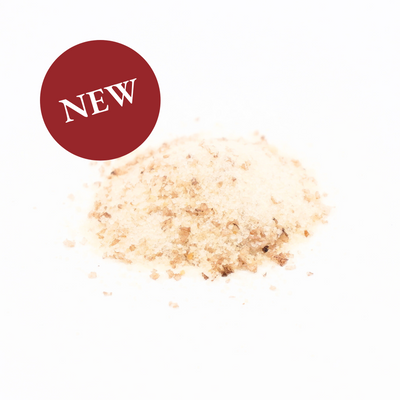EVOO Chemistry: Free Fatty Acids
“Acidity” is likely not the first thing that comes to mind when you think of extra virgin olive oil, but it plays an important role in olive oil grading and whether or not your olive oil should be used for frying.
In Theory
To put acidity into the context of EVOO, we have to take a step back and talk about oils in general. Oils are composed primarily of triglycerides, which are E-shaped molecules that have three fatty acids attached to a glycerol backbone. In fresh, quality oil, the vast majority of those triglycerides are intact. If the oil is old or has been stored and handled in a way that leads to oxidation (i.e. exposed to too much oxygen, heat, or light), the triglycerides can start to break down. Fatty acids break off the backbone of the molecule and become free fatty acids in the oil. So, the more of this breakdown that occurs, the higher the “acidity” or free fatty acid percentage there will be.
In Practice
It can be hard to picture those reactions happening inside your bottle of EVOO, so what does this look like in real life? Well, if an oil is so old or oxidized that it smells and tastes rancid, which indicates just how high the free fatty acid content has risen, you should simply throw that oil out.
However, free fatty acids can be undesirably high even in freshly-pressed oils, if the harvesting and crushing processes were not completed with care. Old olives or ones that experienced pest infestations often produce olive oils with free fatty acid percentages much too high to legally be labelled as extra virgin, or even virgin, olive oil.
The Smoke Show
When you cook over heat with oils such as these- or with other fats, such as butter- they can give off a lot of smoke. The smoke point, which is the temperature at which a given fat begins to smoke, is relatively low for oils with a high free fatty acid content. You may already know that heating oils beyond their smoke point is a big no-no, as that smoke can be dangerous to inhale. So, frying or searing food in poor quality olive oil with high acidity has led people to believe in the myth that you can’t fry with extra virgin olive oil.

Evoolution’s EVOO
Fortunately, Evoolution’s Ultra Premium olive oils must have free fatty acid values below 0.3%. This value is lower than other standards for extra virgin olive oils, meaning the oils are of a higher quality and can tolerate more heat before smoking. For some of our lowest free fatty acid oils, approaching 0.1%, smoke point can reach 220 Celsius or 425 Fahrenheit, as seen in the graph below.

Additionally, frying vegetables, for example, in EVOO capitalizes on the antioxidant and biophenol content of both components. Interchange of these phenolic compounds occurs during cooking with extra virgin olive oil, which gives your recipe a healthy - and tasty- boost. So go ahead and get cooking with Evoolution’s Ultra Premium olive oils!




H @Joey, thanks for your question! Firstly, lineoleic acid is very important for the human diet, as it is the essential fatty acid, omega 6. That means that our bodies cannot make it ourselves, so we must obtain it from our diet. Our bodies use this essential fatty acid to then build other fatty acids for all sorts of cellular functions.
Linoleic acid is found at lower concentrations than oleic acid in olive oil, but it structurally is found in a same place: attached to the “backbone” of a triglyceride. So if a fatty acid (linoleic acid or any other fatty acid in olive oil) were to break off this chemical backbone, it would form a free fatty acid. We only measure the free fatty acids as a whole in that regard, not what type of fatty acid it was that broke off. I hope that answers your question! But rest assured, linoleic acid is a very healthy fatty acid and one we need to get in our diet.
I have been reading about the negative effects of Linoleic Acid (LA), and have seen that olive oil can range between 3-27% LA (lower is better). Do you measure LA for your olive oils? Is it the same as or related to FFAs?
Hi @Enrico, thanks for your question! All oils are pretty much entirely fat. EVOO is about 98% (the other 2% is the bioactive compounds we love, like biophenols and antioxidants). However, the composition of that 98% is very important and it varies widely depending on the fat in question. A liquid fat/oil like EVOO is predominantly the monounsaturated fatty acid, oleic acid. Ours have to be 65% or higher oleic acid. That doesn’t mean that the oil is 65% fat, it means that of the fats in the oil, 65% of them are a good fat called oleic acid. So for the percentages of fats, higher is better when it comes to oleic acid. When it comes to the FFAs, lower is better, because the percentage expressed is a percentage of broken down fatty acids compared to intact fatty acids. I hope that helps answer your question!
is fat or Lipids indicated by the percentage, better when the % is higher and indicates a better oil/
I certainly used to think you weren’t supposed to fry with olive oil… thanks for busting that myth!
Leave a comment